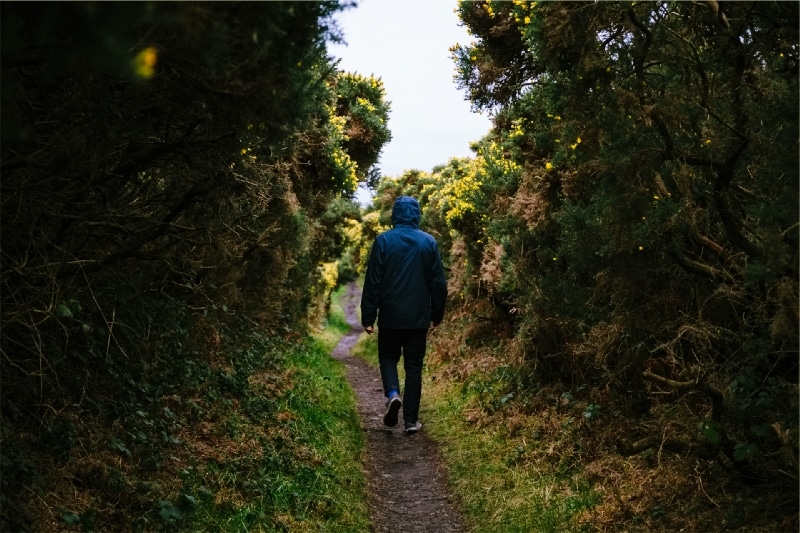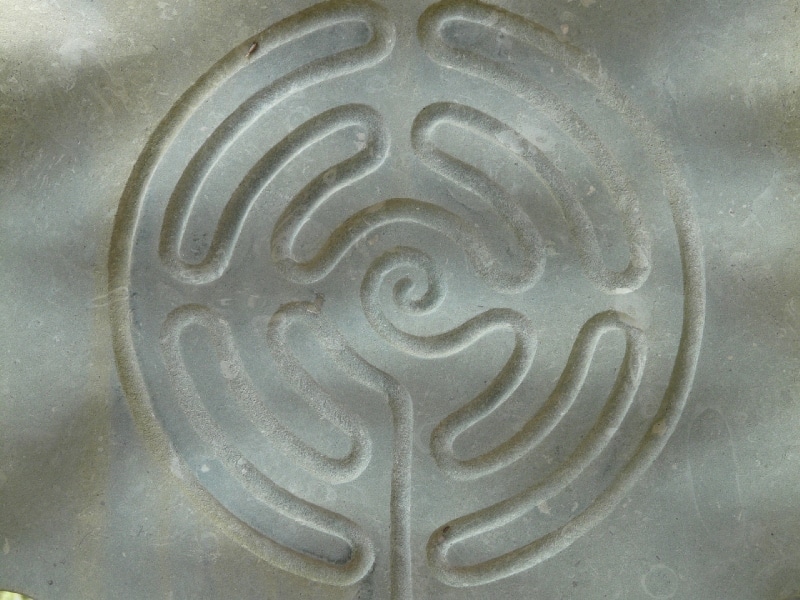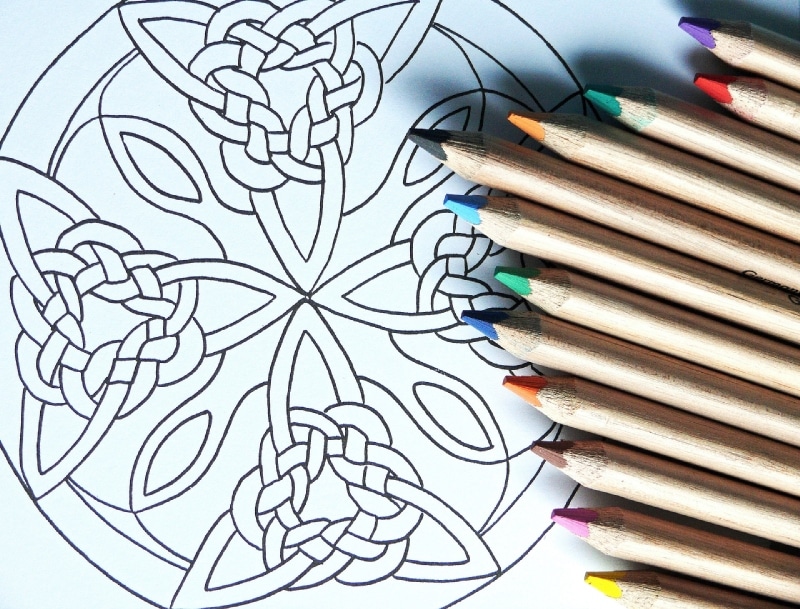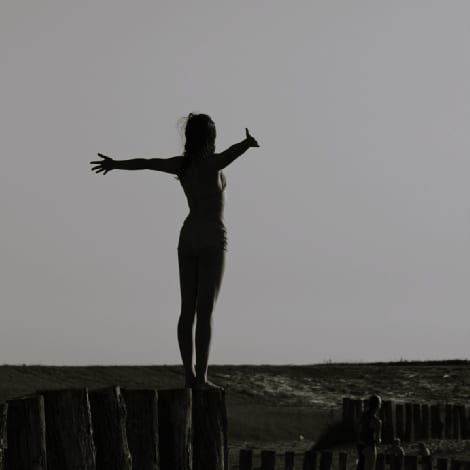If you are anything like me, you might have trouble practicing a traditional sitting and breathing meditation. You start off with the aim of focusing on your breathing and letting those thoughts float away. However, before very long, you’re writing a mental shopping list or re-running that awkward conversation you had with your daughter’s teacher. Sitting still is not the only way of meditating. There are other ways to get into the zone, relax your body and rest your mind. One method is by practicing an active meditation.
You may have experienced active meditation already when practicing yoga, dancing, or lost in a creative reverie when knitting or painting. Active meditation occurs when the body is occupied with an action, usually repetitive, and the mind is focussed on completing that action. All other thoughts disappear and you feel as if you are ‘lost in time’.
The Benefits of Active Meditation
An active meditation helps you reconnect mind, body and spirit. If you’ve been feeling spaced out, scattered, unable to focus, or experiencing jumbled thoughts, a regular active meditation practice can calm and ground you. Some active meditations are designed for rest and relaxation; others can take your consciousness to another level. This second type must be carried out in a safe place where you can’t injure yourself.

Mindful Walking Meditation
Walking in mindfulness is a wonderful way to achieve a rested mind. Choose a relatively level walk and leave the dog at home. You don’t need too many distractions, so avoid places where there is lots of traffic. Wear loose, comfortable clothing and suitable footwear. You’ll need around 20 to 45 minutes.
Before you begin, stand still and breathe. Set your intention to focus fully on the experience. Start walking at a normal, steady pace. Not too fast or too slow.
Notice the feeling of the ground under your feet. Feel how your feet move in your shoes, the way your toes help you to balance, how your heel touches the ground. How your ankles flex.
Focus on the other parts of your body in turn in a similar way: your knees, thighs, pelvis, spine, shoulders, arms, hands, neck and head. Feel all the sensations of walking fully. Notice your breathing. Focus on emptying your lungs completely each time you exhale. This brings more oxygen into your lungs and causes you to feel alert yet relaxed.
Consciously activate your senses. Become aware of scents in the air; how they change as you travel. Feel the temperature of the air on your skin. Listen to the ambient sounds of leaves rustling, birds, distant traffic, planes, your own footsteps.
At the end of your walk, stand still, close your eyes, feel your connection to the earth and breathe in and out deeply a few times. Drop your shoulders and you should feel completely relaxed and energized. Drink water.

Labyrinth Walking Meditation
Labyrinths are springing up all over the place these days, as the healing benefits of ‘walking the labyrinth’ are becoming known. A typical labyrinth is a path contained within a circle or oval boundary. The path turns and twists back on itself so the walker is taken from the entrance to the center, where they turn and follow the path to the exit. They are often simply marked out with painted lines or are constructed of different color and textures of paving.
Walking the labyrinth has been practiced for thousands of years. It enables people to reach deep states of meditation and is said to promote healing and well-being. You simply walk slowly and deliberately , eyes down, following the path in and back out as many times as you need to. The Labyrinth Locator will help find one near you, or, if you have the space, why not mark out your own?

Touching Meditation
A touching meditation is based on an old practice carried out by the wise women (witches) in the South-west of England, in particular the county of Cornwall. When a wise woman wanted to work a healing, similar to what we know as Reiki, she would sit next to her hearth with a large flat stone before her. On the stone was carved a labyrinth or spiral pattern. Closing her eyes, her fore-finger would trace out the pattern, over and over until she reached the desired state of ‘becoming’. In other words becoming one with the person she was attempting to heal.
This state of becoming was used to work magic of all kinds and, of course, it is still sometimes used today. Stones carved with patterns are easy to find these days – garden centers are good places. It doesn’t even have to be a real rock, it could just as effectively be made of resin or wood.
Sit quietly where you won’t be disturbed, close your eyes and lightly trace the pattern on the rock, over and over while you breathe steadily. Place your focus wholly into the tip of your finger and after a little while, you will experience a deep state of relaxation. To come out, stop moving your finger and count up from one to ten. Open your eyes, rest a moment, then get a drink and something to eat. You might want to journal your experience.

Drumming Meditation
The rhythm of the sound and repetitive movement of drumming is an almost instant portal into a calm state of mindfulness. Brain waves slow to Theta. Blood pressure drops and stress falls away. Anything can be used: from beautiful, handmade drums to an upturned plastic flowerpot.
Drumming is part of many cultures and is used in ritual, magical practice, communal consciousness raising and, of course, meditation. Drumming can be done as part of a group therapy or on your own.
Beginning a drumming meditation is simple. Sit comfortably with your instrument of choice. Start drumming with both hands alternately in a pleasing rhythm. A heartbeat rhythm is recommended. Focus on the beat and don’t worry about your breathing. Close your eyes if you life. Each time your mind drifts, bring your focus back to the sound and feel. 15 – 30 minutes is a good length of time.
Alternatively, if you don’t have a drum put your headphones on, lie back and listen to this Shamanic Drum Journey

Mandala Coloring Meditation
Coloring for adults has been gaining in popularity in recent years. Many people are discovering the benefits of ‘zoning out’ while focussed on this gentle activity. Combining coloring with mandalas brings additional benefits.
Mandalas are geometric designs based on a circle. They are used to relax the mind and promote healing. Mandalas are considered to have specific energetic properties and have been used in sacred rituals for centuries.
You can print out mandalas for coloring – there are thousands of free examples on the Internet, or you can treat yourself to a mandala coloring book. Just grab your crayons and get started. An additional way to enjoy this relaxing activity is to wear headphones and listen to a guided meditation or a gentle story.
Happy meditating.
Images via Pixabay

